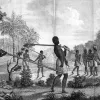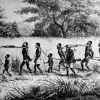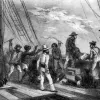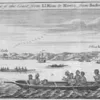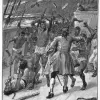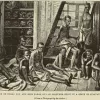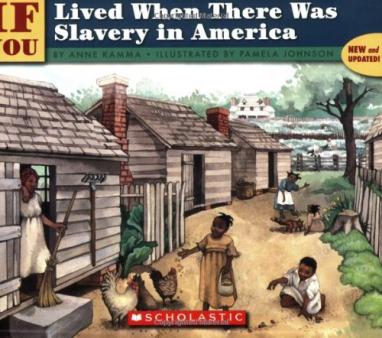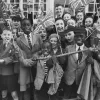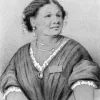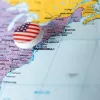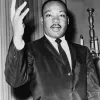TheSchoolRun.com closure date
As we informed you a few months ago, TheSchoolRun has had to make the difficult decision to close due to financial pressures and the company has now ceased trading. We had hoped to keep our content available through a partnership with another educational provider, but this provider has since withdrawn from the agreement.
As a result, we now have to permanently close TheSchoolRun.com. However, to give subscribers time to download any content they’d like to keep, we will keep the website open until 31st July 2025. After this date, the site will be taken down and there will be no further access to any resources. We strongly encourage you to download and save any resources you think you may want to use in the future.
In particular, we suggest downloading:
- Learning packs
- All the worksheets from the 11+ programme, if you are following this with your child
- Complete Learning Journey programmes (the packs below include all 40 worksheets for each programme)
You should already have received 16 primary school eBooks (worth £108.84) to download and keep. If you haven’t received these, please contact us at [email protected] before 31st July 2025, and we will send them to you.
We are very sorry that there is no way to continue offering access to resources and sincerely apologise for the inconvenience caused.
The Atlantic slave trade
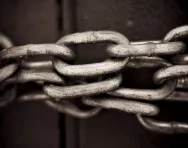
What was the Atlantic slave trade?
The Atlantic slave trade or triangular trade involved the forced enslavement of many millions of Africans and their transport to the Americas, where they were made to work without wages in often inhumane conditions.
The trade was at its height during the 18th century when Britain was the most active trading nation.
The cost of the slave trade in terms of human suffering can not be calculated.
Top 10 facts
- Slavery had existed for many years before the Atlantic slave trade commenced. The first known written law code – that of Hammurabi, dating from around 1760 BC – makes references to slaves.
- The first Europeans to enter into and profit from the slave trade in Africa were the Portuguese who began trading in the 15th century.
- African kings and merchants sold captured enemies or criminals to the European traders. Sometimes they had to sell slaves or risk being taken captive themselves.
- Approximately 12 million people were enslaved as a result of the Atlantic slave trade.
- The journey between Africa and the Americas, the so-called middle passage, took an average of seven weeks.
- Nearly 40% of people taken in slavery came from West Central Africa – the Republic of the Congo, the Democratic Republic of the Congo and Angola.
- Approximately 15% of slaves died whilst being transported to the Americas.
- Slaves were often captured inland and were marched for many weeks to reach the coast. There they were imprisoned in forts called factories awaiting shipping across the Atlantic.
- Slaves were tightly packed on board ships which could carry between 350 and 600 people, with as little as 4 feet of space. The unsanitary conditions led to the spread of disease and many slaves attempted to starve themselves or became very depressed. Some tried to jump overboard.
- 70% of slaves worked to produce sugar with others producing tobacco, coffee or cotton.
Timeline
- 1619First ship-load of Africans arrive in Virginia USA

- 1760First protest against the slave trade is led by a slave called Tacky
- 1772James Somerset escapes from his owner and with the help of the abolitionists Granville Sharp goes to court and is freed; Lord Mansfield rules slavery illegal in England
- 1781The Captain of the Zong slave ship throws 133 Africans overboard to claim on his insurance
- 1787Committee for Abolition of Slave Trade formed in UK
- 1789UK bans slavery
- 1791Slave revolt in Haiti led by Toussaint l’Ouverture
- 1792British Government agrees in principle to end the trade
- 1807British Government rules that anyone found transporting slaves will be fined £100 per slave
- 1808US bans slavery
- 1831Slave revolt in Virginia led by Nat Turner
- 1853Brazil outlaws the slave trade


Start your child on a learning programme today!
- Weekly English, maths & science worksheets direct to your inbox
- Follows the National Curriculum
- Keeps your child's learning on track
Did you know?
- Denmark was the first country to ban the slave trade in 1792.
- Slaves were expected to work 48 hour shifts during harvest time.
- During the 18th century approximately 6 million slaves were transported from Africa. The major slaving nation at that time was Britain, responsible for the transport of 2.5 million Africans.
- The life expectancy for slaves in Brazil was 23 years of age.
- It has been calculated that slaves had only 4 square feet of space on the slave ships.
- Former slaves Olaudah Equino and Sojourner Truth both wrote about their experiences of slavery and were effective campaigners against slavery.
- Harriet Tubman was born a slave in Maryland in the United States of America and became the most famous "conductor" of the Underground Railroad, leading slaves in the American South to freedom in the North. Harriet Tubman was only five foot tall but she liberated over 300 slaves!
- The Atlantic slave trade lasted four and a half centuries.
Browse the gallery below and see if you can spot the following:
- Slaves being moved to the coast of Africa
- An African slave dealer marching slaves to the coast
- Slaves onboard ship
- Plan of a slave ship
- Slaves being taken to a slave ship
- A revolt aboard a slave ship
- Slaves being rescued from a slave ship
Gallery
About
Slavery is where one person is owned by another. A slave is treated as if he or she were a piece of property and is forced to work for nothing for their owners. Slavery has probably existed throughout human history and been practised by many different civilisations.
Slavery in Africa existed before the arrival of Europeans but the Atlantic slave trade changed the scale of the trade and the way it was conducted. Over the centuries up to 12 million African people were enslaved and transported to the Americas. The majority (48%) went to the Caribbean islands, with 41% going to Brazil and 5% to North America. These slaves were chattel slaves which meant that their children were also slaves.
The Atlantic slave trade arose because Europeans were keen to make money from the newly discovered territories of the Americas. The native Indian population had been very much reduced and in some places almost wiped out by the Europeans and the survivors proved unsuited to the heavy labour they required. The transport of slaves from Africa seemed to provide the profit-hungry Europeans with an endless supply of labour.
The trade in slaves was called the triangular trade because it had three stages.
- Manufactured goods from Europe such as blankets, beads and guns were taken to Africa where they were exchanged for slaves.
- The transport of slaves from Africa to the Americas was known as the middle passage.
- Finally raw material and goods produced as a result of slave labour such as cotton, sugar, rum and tobacco from the Americas were brought back to Europe.
The Committee for the Abolition of the Slave trade was led by William Wilberforce, Granville Sharp and Thomas Clarkson, though many Black British people also participated in the abolition movement. Although the British took a leading role in abolishing the trade it should not be forgotten that for many years Britain had been the most active slave-trading nation of all. Many people made a lot of money from the trade and cities such as Bristol, London and Liverpool grew wealthy as a result of it.
Related Videos
See for yourself
- Visit the International Slavery Museum in Liverpool
- Permanent exhibition on London Sugar and Slavery at Museum of London
- Hull museum collections on slavery and the abolitionist William Wilberforce
- Pictures, medals and other items relating to slavery at the National Maritime Museum, Greenwich
- Follow the stories of enslaved Africans from 1780
- See pictures of artefacts from the Atlantic slave crossings and understand more about the objects and what they represent
Books for children about the Atlantic slave trade
Find out more:
- BBC video clips about the Atlantic slave trade and the role of greed and poverty
- A DK findout! diagram illustrating the slave trade
- Read Newsround's guide to the slave trade and Black History Month
- The triangular slave trade explained by BBC Bitesize
- Information about the Brookes slave ship, which was built in Liverpool in the 1780s and carried over 600 enslaved Africans across the Atlantic in 1783
- An online history of Bristol’s role in the slave trade
- A short guide to the slave trade
- Background information about Britain and the transatlantic slave trade from The National Archives.
- Read the story of the abolitionist Olaudah Equiano
- Look at an abolitionist poetry book for children on the British Library website
- Read about the British heroes of abolition
- Learn about Thomas Fowell Buxton, who worked to bring about the complete abolition of slavery within the British Empire
- Find out about the end of the slave trade in 1807
- See images of what an African American slave home would have looked like
- Learn more about slave life and the Underground Railroad in the USA
- Information for kids about abolitionist leader Harriet Tubman
- The story of Sojourner Truth, a former slave who became an outspoken advocate for abolition and civil and women’s rights in 19th century America
- 150 years ago, the United States of America was divided into two parts, the Union and the Confederacy, as the Civil War raged
- Read some historical fiction for kids about black history
- Find out about six former slaves who worked for freedom in a BBC Newsround guide
